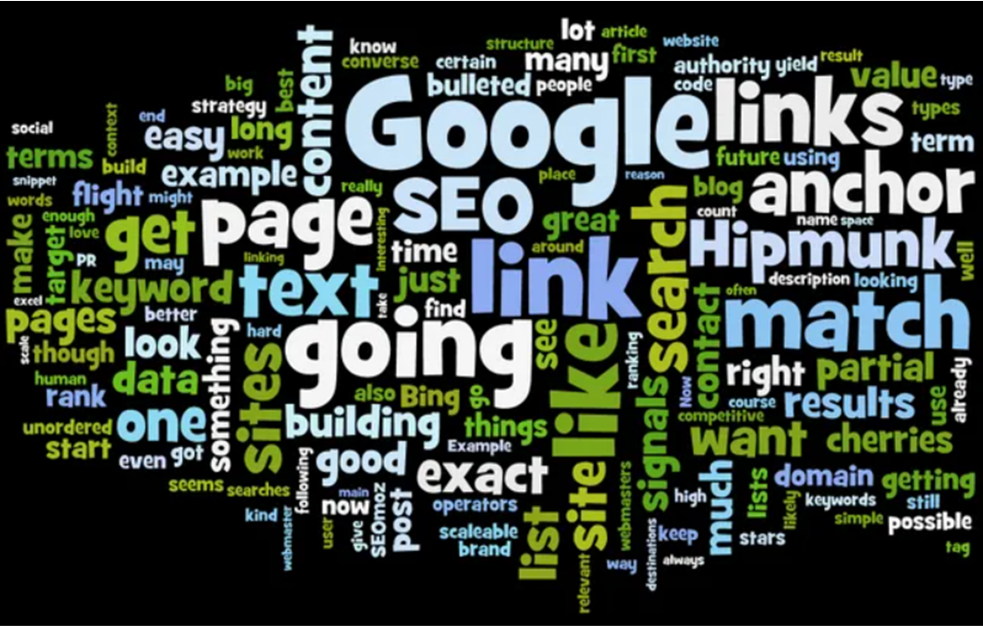Anchor Text Optimisation
Anchor texts are the clickable and hyperlinked words in an article. Anchor text optimisation entails using the most suitable anchors in both external and internal content to make your content rank better in SERPs.
Before 2012, best practice was to make anchor texts keyword-rich. But then, Google released the Penguin Update. Following this, websites that used exact match keywords for their anchor text saw major drops in their rankings.
Webmasters then took it upon themselves to think about the best strategies to optimize their anchors to get back on their feet.

Types of Anchors and how effective they are
There are different types of anchors used and some of these are:
1. The basic/zero/un-optimised/generic Anchors
They are phrases or words that are unrelated to your content. For example, ‘click here’, ‘check this’ etc. Such anchors add no value to your content.
However, they are best used in websites that don’t necessarily need any SEO value from anchors, such as press releases, donation websites, profile links, etc.
<a href=“https:// shop.adidas.co.za’’>Click here</a>to buy sneakers.
2.Naked Anchors
These are anchors such as https:// shop.adidas.co.za. They easily stand out in the content, are easily noticeable and easily interrupt the readers. However, they are not optimal.
3. Aggressive/Exact Match/Money Anchors
These are anchor texts that use the exact match keywords that your content is trying to rank for. They are quite popular in the realm of SEO. They can be very effective, but also risky. Use such anchors sparingly. For instance, in Google Ads or when you are linking to high value exact match content.
<a href=“https:// shop.adidas.co.za’’>buy sneakers</a>
4. Partial-Match Anchors
These are anchor texts that are just the variations of the exact-match keywords. They appear more natural in the content than exact match keywords. For easy Google crawling, ensure that you surround the anchor text with primary keywords.
<a href=“https:// shop.adidas.co.za’’>buy sneakers online</a>
5. Diversified or LSI (Latent Semantic Indexing)
These are basically keywords or anchors that are semantically related to the topic. They are words that people will most likely search for in relation to a keyword. For instance, a keyword such as Adidas has LSI keywords like sneakers, tracksuit, shoes, etc.
This type of anchor text is quite effective for creating authoritative content that’ll easily satisfy Natural Language Processing requirements.
<a href=“https:// shop.adidas.co.za’’>buy sneakers for women</a>
6. Long-Tail Anchors
These are anchors that have three to four-word phrases (sometimes more) that are very specific to what your content is about or the product you offer. For instance, ‘where to buy the latest sneakers online’.
They are very effective in targeting certain customers. However, they have a very low reach.
<a href=“https:// shop.adidas.co.za’’>where to buy the latest sneakers online</a>
7. Branded Anchors
These use brand names and are quite effective.
<a href=“https:// shop.adidas.co.za’’>Reebok</a>

8. No text Anchors
No text anchors are usually images that don’t have an alt text. These don’t help your site when it comes to SEO because Google can’t read it. However, No Text Anchors do count in creating a diversified backlink profile.
9. Blog Title Anchors
These anchors use the exact title of the blog post you want to link to and are quite effective.
<a href=“https:// shop.adidas.co.za’’>Get to Know the Three Stripes Family</a>
10. Google Suggested Searches
These make use of Google’s suggested search options as anchors. They are quite effective as search options may be inclusive of valuable LSI keywords.
How to Optimise Anchors for the Best SEO Results
- Check your current link-profile using the ahref backlink checker.
- Monitor or observe the SEO value of your anchor texts using the ‘Anchor Text Distribution’ tool on Search Engine Reports.
- Get rid of toxic links and fix over-optimised anchors. Always try to link to high-quality websites and avoid dodgy sites.
- Ensure that your anchor texts are diversified.
- Make sure that your anchor texts are used in a way that’ll add value to your site and not distract the reader.
When doing your competitor analysis, try to follow anchor text strategies only from top competitors that have a similar page authority and domain to you. - When doing your competitor analysis, try to follow anchor text strategies only from top competitors that have a similar page authority and domain to you.
- Try to avoid copying anchor text strategies used by extremely high-authority domain websites as they built their trust overtime. Unlike your site, they may also get away with using many exact match keywords.


